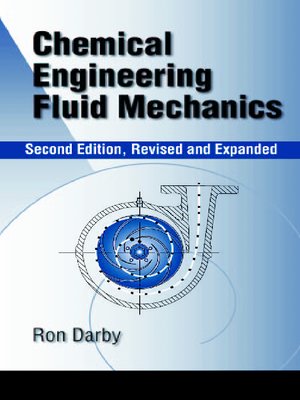
Sign up to save your library
With an OverDrive account, you can save your favorite libraries for at-a-glance information about availability. Find out more about OverDrive accounts.
Find this title in Libby, the library reading app by OverDrive.



Search for a digital library with this title
Title found at these libraries:
| Library Name | Distance |
|---|---|
| Loading... |
Combining theoretical and empirical perspectives into a clearly organized and comprehensive text, Chemical Engineering Fluid Mechanics, Second Edition discusses the principal behavioral concepts of fluids and the basic methods of analysis for solving a variety of engineering situations.
New and revised sections include
- practical and seasoned applications of fundamental principles through specialized problems leading into general principles and complex exercises
- the latest and most accurate methods for determining friction loss in valves and fittings
- selection of proper control valve trim considering matching flow loop characteristics
- fluid-particle interactions in Newtonian and non-Newtonian media
- fluid-solid separation operations
- parallel and analogous treatment of Newtonian and non-Newtonian flows
- horizontal and vertical pipe flows of settling and non-settling Newtonian and non-Newtonian slurries
- pipe flows of gas-liquid, solid-liquid, and gas-solid two-phase systems
Utilizing the author’s 35 years of academic experience to present the most current advances and previously unavailable information, Chemical Engineering Fluid Mechanics, Second Edition
- emphasizes the systematic application of general principles such as macroscopic mass, energy, and momentum balances and economics
- covers the internal flows of Newtonian and non-Newtonian incompressible fluids, adiabatic and isothermal compressible flows, external flows, two-phase flows, and flow in porous media
- reviews a variety of applications, including dimensional analysis and scale-up; piping systems for unknown driving forces, flow rates, and diameters; and centrifugal, sedimentation, and filtration fluid-particle separation methods
- applies the latest techniques for gas and liquid Newtonian and non-Newtonian flows in pipes, valves, fittings for non-circular conduits, pumps and compressors, packed columns, fluidized beds, centrifuges and cyclones
- and more!
Supplemented with over 1100 equations, literature references, illustrations, and tables, Chemical Engineering Fluid Mechanics, Second Edition serves as an insightful text for upper-level undergraduate and graduate students taking courses in fluid mechanics, unit operations, or plant design, as well as a useful resource for chemical, mechanical, plant, process, design, and civil engineers.







